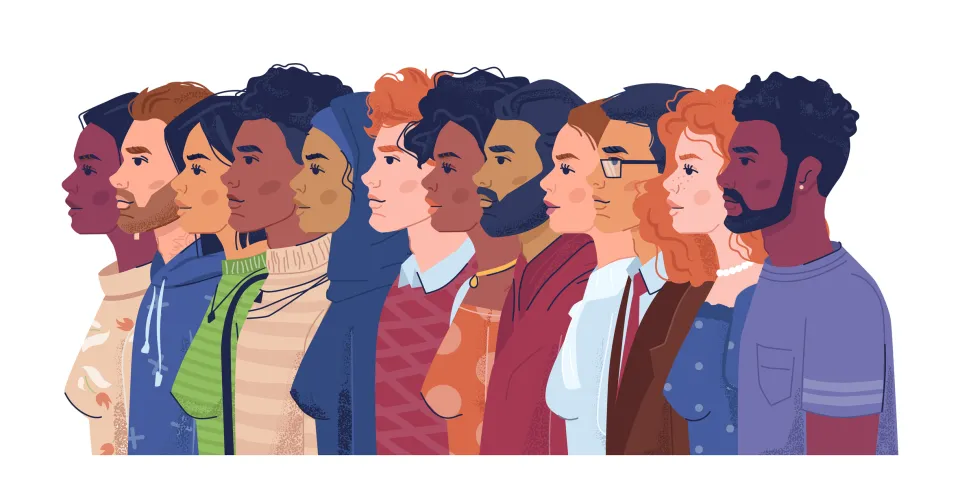According to the research conducted by the boarding school in India, This paper will examine the importance of cultural competency in education by focusing on the framework for cultural competence and how it relates to developmental and educational psychology. It will also provide an overview of some of the factors that affect student performance in the classroom including diversity, language, culture, and schooling to show how teachers can be more culturally competent. Finally, this outline will provide an explanation of how teachers in a multicultural society must challenge the process through which they view students and others they work with to affect change.
The Importance of Cultural Competency in Education
Increasing diversity in the student population
- As a result of increased immigration and the higher birth rate among minority groups, the United States is becoming more diverse. The 2010 census reveals that by 2043, non-Hispanic whites will no longer be in the majority.
- The changing racial composition of students has also had an impact on school cultures and practices. In response to this shift, some schools have begun offering more culturally relevant curricula and instructional materials to help students understand themselves and their communities more deeply.
- Diversity can also be seen within schools themselves. Some schools have high concentrations of students from low-income families or immigrant families; others have only a small percentage of such students. The presence of children with disabilities or gifted learners also affects the learning environment within schools.
Addressing cultural disparities in academic achievement
- There is a long-standing concern among policymakers that many students are not achieving at the same level as their peers and that this achievement gap is particularly pronounced for students from low-income backgrounds.
- Cultural disparities are evident in academic achievement, college enrollment, workforce participation, and other outcomes across all racial groups. The gaps are especially pronounced between white students and their black or Hispanic peers. However, there is also evidence of cultural disparities within racial groups:
- Low-income white students tend to fare worse than high-income whites on measures of academic achievement, while low-income Asian American students tend to perform better than high-income Asians.
Preparing students for a globalized workforce
- The world has never been more connected, and the importance of cultural competency in education is more important than ever. As our world becomes increasingly interconnected, it is critical that we equip our children with the skills and knowledge to thrive in a globalized workforce.
- Globalization is defined as “the process of internationalization or widening of a company’s perspective to consider factors beyond its own borders.” The practice of globalization involves breaking down barriers between nations so that businesses can operate more efficiently by creating a network of partners who can help them reach new markets. This has resulted in an increase in international business transactions and trade, which has helped create jobs in the United States and abroad.
- As globalization continues to grow, so too does the need for culturally competent professionals who can navigate this new business landscape while remaining respectful of cultural differences along the way.
Strategies for Incorporating Cultural Competency in Education

Integrating cultural competency into the curriculum
- When it comes to education, the importance of cultural competency can be a challenge. It requires more than just learning about the culture and racial identity; it requires an understanding of how people in different cultures think, feel, and behave.
- Integrating the importance of cultural competency into the curriculum is no simple task, but it’s an important one. The sooner students are exposed to diverse cultures, the better their chances of success in life. And if you want to help them succeed, you need to incorporate cultural competency into your teaching practices.
- Here are some ideas for how you can do that:
1. Focus on the bigger picture, not individual components
2. Use multiple perspectives
3. Make connections between content areas Providing professional development for educators
- The goal of providing cultural competency in education is to ensure that all students receive the best quality education possible. To accomplish this, we must first understand the role of culture in education.
- Culture influences how people think, feel, and behave. It also influences how they communicate with one another. The way students interact with teachers and other students is affected by their own culture as well as the cultures of their peers and teachers.
Encouraging cross-cultural communication and understanding
The foundation of education is built on the concept that cultural competence must be at the heart of every lesson plan, curriculum, and classroom. The educational system has been slow to embrace this philosophy, but there are signs that it is finally making headway.
In an effort to make education more inclusive for all students, districts across the country have begun to incorporate cultural competency into their curriculums. But what does this mean? It means providing students with the knowledge and skills they need to live and work in a diverse world. It means teaching them about other cultures and how those cultures influence their own lives. It means helping students understand their own identity as well as the identities of others around them.
Cultural competency is a skill set that includes understanding one’s own culture as well as understanding the cultures of others within one’s community or classroom. It also includes understanding how culture influences decision-making processes, communication styles, and conflict-resolution techniques.
Benefits of Cultural Competency in Education

Improved academic outcomes for students
Improved academic outcomes for students. Students who feel safe and supported by their teachers tend to do better academically than those who don’t. Cultural competency allows teachers to understand the ways that their actions impact students’ performance and behavior. For example, if a teacher takes an interest in what motivates one student but ignores another student’s interests, it could be perceived as negative or biased treatment. This could lead the second student to feel isolated and frustrated.
Increased engagement among all students. As mentioned above, when teachers have an understanding of the various types of learning styles among their students, they can create more engaging lessons that appeal to every type of learner in their classroom
Reduced disciplinary actions against minority students. Minority students are often disciplined more harshly than white students even when they commit similar offensesBetter social and emotional well-being for students
- Culturally competent teachers are aware of their own biases and understand that they affect their interactions with students. They recognize that learning is shaped by the cultural context in which it occurs, and they are able to adapt their instruction accordingly.
- These teachers also show respect for cultural differences among students and are knowledgeable about how those differences affect learning. This helps them create inclusive environments where all students feel welcomed, supported, and valued.
- This can lead to better social and emotional well-being for students, as well as greater academic success.
Greater workforce diversity and productivity
People from different backgrounds bring unique perspectives and experiences to the workplace, which creates a more vibrant environment for everyone. They also tend to be more loyal employees because they feel valued by their employers.
Challenges in Implementing Cultural Competency in Education

Resistance to change from educators and administrators
The challenges of implementing cultural competency in education are not just about the curriculum. They’re also about getting teachers and administrators on board, who may have a different understanding of what the importance of cultural competency means, and why it’s important.
One of the biggest challenges is resistance to change, says Anne Browning-Lewis, an associate professor at the University of Washington whose research focuses on culturally responsive teaching practices. She says some educators don’t understand why they’re being asked to implement this kind of curriculum. “People have varying degrees of comfort with it,” she says.
Other challenges include time constraints and funding issues. “I think there’s this idea that if we just get better at teaching our students more about their own cultures, then they’ll be better prepared for life,” Browning-Lewis says. “But there’s so much more involved.”
Lack of resources and funding
There is a big difference between knowing what needs to be done and actually being able to do it. Many schools have limited resources available for training teachers and providing them with the tools they need to implement culturally sensitive practices in their classrooms. In addition, there can be a lack of funding for programs designed to improve diversity within schools and communities.
Lack of support from parents
If parents don’t support these efforts, then those efforts won’t succeed either. Parents who aren’t supportive may not want their children taught by teachers who use culturally sensitive practices or who teach about diversity at all. This means that teachers may need additional training on how best to communicate with parents about these issues so as not to alienate them further from these
Conclusion
To conclude, we bring you one last thought as well. With so much happening in the world of education—both in the academic and nonverbal realms—it’s easy to feel overwhelmed. If this post has reached out to you and helped raise more awareness about the importance of cultural competency, the importance of cultural competency in today’s world, and how to effectively teach culturally different students, then it’s a win for everyone. So, even if you found this post confusing or something that does not relate to your field of study, I thank you for reading.









